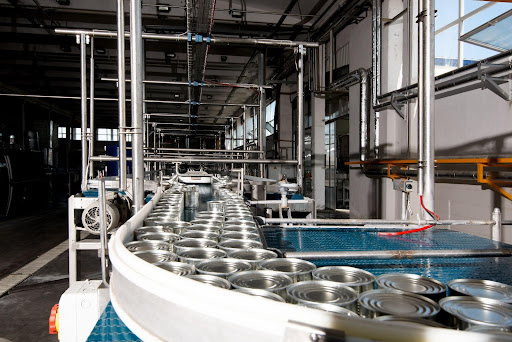The changing seasons significantly affect the Food manufacturing industry and retailers of every type. Seasonality plays a prominent role in the availability, cost, and demand for specific products or ingredients and influences consumer preferences and buying habits. This fluctuation in supply and cost, tied to identified periods/cycles, can considerably strain food manufacturers and the wide-ranging variety of consumer-facing retailers along the retail landscape.
Sudden increases in demand for seasonal foods, for instance, can put pressure on the inventory available to manufacturers. In contrast, seasonal Food’s decline in popularity (meaning “demand”) often results in excess stock and inventory waste. In both cases, seasonality in the food industry is something that manufacturers must always be mindful of to capitalize on the peaks and troughs of the seasonal sales cycle to not only take advantage of each season’s unique opportunities but also to minimize potential loss of both goods and profits due to seasonal issues.
Below, we explore how “food seasonality” impacts the food industry and what manufacturers and retailers can do to limit food waste and profit loss to better capitalize on the opportunities presented by seasonal food items.
What Is Seasonality in Food Manufacturing?
At the most obvious and fundamental level, the demand for various food items increases or decreases depending on the season—turkeys during Thanksgiving. Hamburger meat and frankfurters during the summer. Fruits and vegetables in the springtime. Chicken wings during Super Bowl. Pumpkin-spiced everything in the fall. And then, there’s the dazzling array of specialty goods produced from Christmas to the new year – holiday-inspired cookies, cakes, chocolates, and, well, so much more.
On the one hand, seasonality in food manufacturing can (and often is) a great boon for business, allowing manufacturers to source high-quality ingredients at a low cost when consumer demand is at its highest. On the other hand, a needle must always be threaded about how much ingredient inventory needs to be placed and how much product to produce. This is always the calibrated question food executives must look into the consumer crystal ball to conjure an answer and nervously fill in their forecasts on their quarterly report spreadsheets.
Until 2020, Food Seasonal issues were more predictable than they are today. Given the national (and global) supply chain challenges businesses have experienced since the Pandemic, even greater uncertainty, all year round, represents more top-of-the-mind awareness and concerns on the dependability and stability of the entire food supply chain – from growers through to retailers. And then, there’s another new reality of life — Climate Change. Unpredictable weather – either too much rain or too little rain – meaning drought conditions, as seen in Western agricultural states, can create sudden surges or declines in availability and demand for various products. These uncertainties can cause price spikes given (food/product) shortages, as we have recently seen, for instance, in the cost of eggs, milk, and chicken, among staples and other goods.
The Impact of Seasonality on the Food Manufacturing Industry
For those in food manufacturing, seasonality can significantly affect the cost of certain foods. For example, suppose a manufacturer uses tomatoes as a main ingredient in their products. In that case, they’ll find much cheaper pricing during the summer months – when tomatoes are in season – than they will during the winter. As a result, it will cost less to produce a food item when its main ingredient is in season, equating to a higher profit margin for manufacturers. But when the changing season raises the price of tomatoes, the higher costs for the manufacturer often get passed down to the consumer.
This dynamic is especially evident when dealing with specialty seasonal food items. Chocolates around Easter or pumpkin-spiced products in late fall, for instance, can experience extremely high demand for a limited time. While this presents an opportunity for increased sales, seasonal instability can also pose risks to manufacturers hoping to capitalize on the short-lived consumer behavior. Misreading demand can result in too little product, or worse, too much, which can lead to excessive inventory and food waste. Either scenario bodes poorly for food executives and the company’s bottom line.
What Can I Do with Excess Inventory Due to Seasonality in Food Industry?
Suppose you’re in the Food manufacturing industry or are a food retailer such as a grocery store, supermarket chain, convenience store, etc. In that case, chances are seasonality has caused you to have excess inventory either on your shelves (which you need to clear) or, worse, sitting in your cold or dry storage warehouse, taking up costly space. Bottom line – you’re staring at lost revenue and unnecessary carrying costs on what is effectively dead inventory. In the aggregate, these are less than optimal circumstances. Despite the many challenges facing food executives, food-related producers,, and business owners, there is a solution.
How Marvell Foods – A Specialty Food Broker Can Help
The answer: A food broker who specializes in excess, surplus, close-coded, or expired foods. This is a high niche arena, and a food broker, such as Marvell Foods, the nation’s leader specializing in these issues – excess and surplus inventory, short-coded or expired goods, can help.
A company like Marvell Foods goes by many names, given the unique nature of its business model and the types of distressed food items it handles. With over thirty years in the food industry, expertise in the highly specialized arena of the secondary market, and a national and international buyer and seller client base, Marvell Foods has a wide range of clients — buyers and sellers for a remarkably wide range of food products.
If you’re looking for a reliable way to minimize your profit loss and food waste due to seasonal overstock, contact Marvell Foods, the country’s leading food surplus buyer, to help you minimize profit loss from unsold seasonal goods while also generating unexpected bottom-line revenue.

